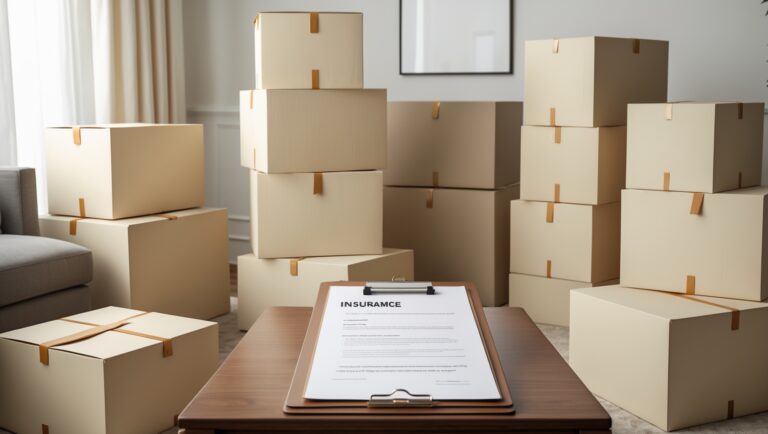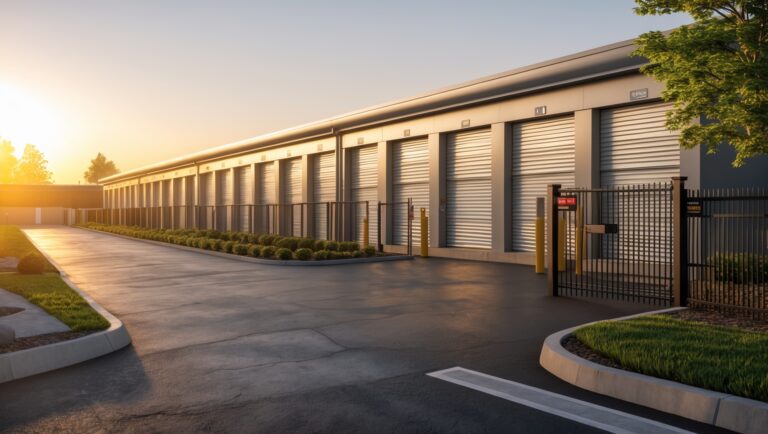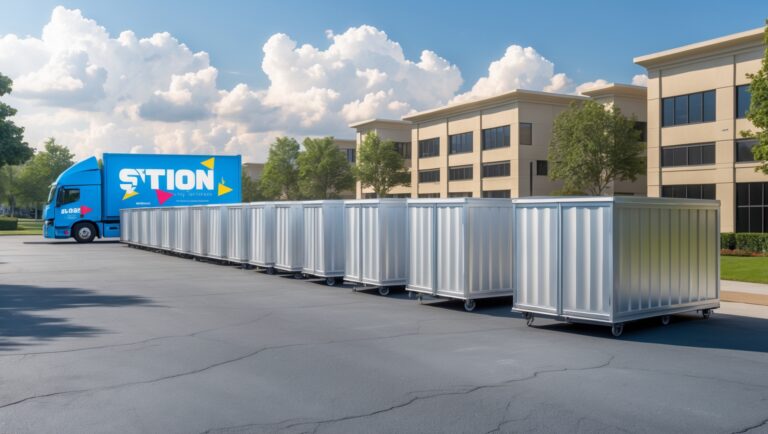Understanding Storage Unit Insurance Claims: Step-by-Step Guidance for Owners and Tenants
Introduction: Why Storage Unit Insurance Claims Matter
Self-storage facilities provide crucial solutions for both individuals and businesses in need of extra space. However, despite robust security measures and maintenance routines, unexpected events such as fires, thefts, water damage, or natural disasters can occur. When they do, insurance becomes a vital safety net. Yet, both storage unit owners and tenants often find themselves uncertain about the claims process—what’s covered, how to document losses, what to expect from insurers, and how to avoid common pitfalls that can delay or jeopardize compensation. This guide addresses those questions with step-by-step clarity, empowering owners and tenants to navigate insurance claims efficiently, maximize their protections, and minimize stress during challenging moments. We’ll explore the essential documentation, timelines, communication strategies, and unique considerations for both facility owners and renters, ensuring you’re prepared long before the unexpected happens. Whether you’re dealing with a minor incident or a major loss, understanding the claims process is key to a swift, positive outcome.
Storage Unit Insurance Basics: What’s Really Covered?
Types of Insurance Policies
Before a claim is ever filed, it’s crucial to understand the types of insurance relevant to storage units:
- Facility Insurance (Owner’s Policy): Covers the physical building, structural elements, and in some cases, facility-owned equipment. It does not cover tenants’ personal belongings.
- Tenant Insurance (Renter’s Policy): Covers the contents stored within the rented unit. This may be a stand-alone policy or a rider on a renter’s or homeowner’s insurance.
- Umbrella and Specialty Coverage: May be available for high-value items, business inventory, or unique risks (e.g., flood, earthquake).
Commonly Covered Events
- Theft (with evidence of forced entry)
- Fire and smoke damage
- Water damage (excluding floods, unless specified)
- Vandalism
- Storm and wind damage
Exclusions: Most policies exclude certain perils such as floods, earthquakes, vermin/pest damage, and neglect. Always review policy details carefully to avoid surprises.
Step-by-Step Claims Process for Storage Facility Owners
1. Immediate Response: Ensure Safety and Limit Further Loss
- Secure the affected area. Prevent access if there’s ongoing hazard.
- Contact emergency services if required (police, fire, etc.).
- Coordinate with staff to document the scene—photographs and videos are vital.
2. Notify Your Insurance Provider
- Contact your insurer’s claims hotline as soon as possible.
- Have your policy number, facility address, and a summary of the incident ready.
- Ask about immediate next steps and documentation requirements.
3. Document Everything
- Take clear photos and videos of property damage, both wide shots and close-ups.
- Preserve any physical evidence (damaged locks, broken doors, etc.).
- Log all communications with tenants, authorities, and the insurer.
- Prepare a written incident report with dates, times, and staff involved.
4. Mitigate Further Damage
- Take temporary measures to prevent ongoing loss (e.g., board up windows, tarp roofs).
- Keep receipts for any emergency repairs—these may be reimbursable.
5. Work With the Insurance Adjuster
- Arrange a site visit for the adjuster. Provide full access and all documentation collected.
- Be present to answer questions and point out important details.
6. Communicate With Affected Tenants
- Notify tenants promptly of the incident and next steps. Be transparent but avoid admitting liability before the insurer’s assessment.
- Provide tenants with information about filing their own claims, including insurer contact details if you offer a tenant policy.
7. Track Your Claim
- Maintain a timeline of all claim-related actions.
- Follow up regularly with your insurer for status updates.
- Respond promptly to requests for additional information.
8. Settlement and Repairs
- Review the insurer’s settlement offer. If you disagree, provide additional documentation or seek professional appraisal.
- Coordinate restoration work with reputable contractors.
- Keep detailed records of all expenses and repairs for future reference.
Step-by-Step Claims Process for Storage Unit Tenants
1. Assess and Document Your Loss
- Do not remove or discard damaged items until they are documented.
- Take photos/videos of all affected belongings, showing serial numbers or unique features if possible.
- Make a written inventory of lost or damaged items, including estimated values and purchase dates.
2. Notify the Storage Facility and Authorities
- Inform the facility manager immediately. Request a written incident report.
- If theft or vandalism is suspected, file a police report and obtain a copy.
3. Review Your Insurance Coverage
- Locate your policy documents. Check if your homeowner’s/renter’s insurance extends to storage units, or if you have a stand-alone tenant policy.
- Note deductibles, coverage limits, and any excluded items.
4. File Your Claim Promptly
- Contact your insurance provider’s claims department (by phone or online portal).
- Have your policy information, photos, inventory, and incident report ready.
- Submit all requested forms and supporting documents.
5. Cooperate With the Claims Adjuster
- Schedule an inspection if required. Be prepared to show the damaged unit and items.
- Answer questions truthfully and provide any additional evidence requested.
6. Track and Follow Up
- Keep a log of all communications with your insurer and facility.
- Follow up regularly to check claim status.
- Retain copies of all correspondence and settlement paperwork.
7. Settlement and Replacement
- Review the insurer’s offer. If it’s lower than expected, discuss the valuation method or provide receipts/appraisals.
- Once settled, use the funds to replace or repair items as needed.
Documentation: The Cornerstone of a Successful Claim
For Owners
- Updated facility inventory (doors, cameras, alarms, signage, etc.)
- Maintenance logs and inspection reports
- Lease agreements and tenant insurance records
- Photos/videos of pre- and post-incident conditions
- Correspondence logs with tenants and insurers
For Tenants
- Inventory list with photos of stored items (keep this updated before any incident)
- Receipts or appraisals for high-value belongings
- Lease agreement and insurance policy documents
- Police report (for theft/vandalism claims)
- Facility-provided incident reports
Timelines and What to Expect
Insurance claims rarely resolve overnight. Typical timelines for storage unit claims:
- Notification: Within 24-72 hours of the incident
- Initial Adjuster Contact: 1-2 weeks
- Documentation Review and Site Visit: 1-3 weeks
- Settlement Offer: 2-6 weeks after all documents submitted
- Repairs/Restoration (for owners): May require additional time based on contractor availability
Delays often result from missing paperwork, unclear evidence, or disputed valuations. Proactive communication and complete documentation are the best ways to avoid frustration.
Common Pitfalls and How to Avoid Them
- Inadequate Documentation: Failing to photograph damage or maintain inventory lists can severely reduce payouts.
- Underestimating Value: Not knowing the replacement cost of items or facility assets can result in low settlements.
- Missed Deadlines: Delayed claims or incomplete submissions may lead to denial.
- Misunderstanding Coverage: Assuming certain perils are covered without confirmation.
- Poor Communication: Not keeping tenants, insurers, or contractors informed creates confusion and mistrust.
Special Considerations: Business Storage and High-Value Items
Business Inventory
For businesses using storage units, standard tenant insurance may not suffice. Consider a commercial property rider or separate business insurance. Claims for business interruption or loss of income require additional documentation, such as invoices and tax records.
High-Value and Specialty Items
- Obtain appraisals for rare or unusually valuable items.
- Consider specialty or scheduled coverage for art, antiques, or collectibles.
- Document provenance and unique features with photos and certificates.
Best Practices for Owners: Improving the Claims Experience
- Encourage tenant insurance: Require or strongly recommend coverage to all renters.
- Provide clear claim instructions: Include contact details, process steps, and claim forms in move-in packets and your website.
- Maintain facility condition: Regular inspections and prompt repairs reduce risk and strengthen your claim credibility.
- Train staff: Ensure all employees understand what to do in case of an incident, including documentation and communication protocols.
- Review coverage annually: As your facility upgrades or expands, verify that your policy limits and covered perils are up to date.
Best Practices for Tenants: Maximizing Your Protection
- Inventory before you store: Photograph and list all belongings when you move them in.
- Understand your policy: Know your deductibles, limits, and exclusions. Consider increasing coverage for high-value storage.
- Keep receipts: Store digital or hard copies of purchase invoices and appraisals.
- Avoid prohibited items: Don’t store perishable, flammable, or excluded goods—they could void your claim.
- Stay organized: Keep policy numbers, facility contacts, and your inventory list in a safe, accessible place.
What To Do If Your Claim Is Denied
- Request a written explanation from your insurer.
- Review your policy and compare with the insurer’s reasoning.
- Gather additional documentation or expert opinions if needed.
- File an appeal or request reconsideration in writing.
- If unresolved, consult a public adjuster or insurance attorney for advice.
Conclusion: Being Prepared Is the Best Insurance
Facing a loss at your storage facility or in your rented unit is never easy—but being prepared makes a world of difference. For owners, a well-organized response, complete documentation, and transparent communication with both tenants and insurers streamline claims and help you restore your business faster. For tenants, understanding your policy, keeping meticulous records, and acting quickly ensure you get the compensation you deserve without unnecessary delays.
Remember, insurance is only as effective as your ability to use it properly. Review your coverage before disaster strikes, maintain up-to-date inventories, and foster a strong relationship with your insurer and, if you’re an owner, with your tenants. This attention to detail not only facilitates faster, fairer settlements—it also builds trust and peace of mind. When everyone involved knows the process and their responsibilities, unexpected events become manageable, and both property and relationships can be rebuilt with confidence.
Whether you’re a facility owner striving to protect your investment or a tenant safeguarding treasured belongings, make insurance claims preparation part of your regular routine. When the time comes, you’ll be ready to act decisively—and that’s the best protection you can have.





